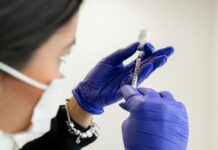Are you interested in building a rehab center that brings about deep life-changing results for its patients?
Traditional rehab centers mainly use medical treatments but successful modern facilities now implement holistic methods to address physical health together with mental and spiritual well-being. Modern rehabilitation facilities that use these full-spectrum treatment methods report both higher recovery success rates and enhanced long-term results.
More than four out of ten Americans currently use Complementary and Alternative Medicine (CAM) practices which reflects growing acceptance of holistic treatment methods for numerous health conditions including addiction.
Building a successful holistic rehab center involves detailed planning and specialized knowledge alongside understanding effective addiction recovery practices.
What You’ll Discover Here:
- What Are Holistic Approaches in Rehabilitation?
- The Science Behind Holistic Rehab Methods
- Essential Holistic Elements for Modern Rehab Centers
- Practical Steps for Implementing Holistic Programs
- Challenges and Solutions in Holistic Rehab
What Are Holistic Approaches in Rehabilitation?
Holistic rehabilitation methods work on healing the whole individual instead of only treating addiction symptoms or physical injuries. Multiple-level healing processes are fundamental to these recovery methods.
- Physical recovery requires detoxification procedures alongside proper nutrition plans exercise routines and physical therapy treatments
- Psychological healing: Therapy, counseling, stress management
- Social recovery depends on family therapy alongside community support and social skills training.
- Spiritual healing: Meditation, mindfulness, purpose-finding activities
Traditional rehab programs target medical recovery while holistic rehabilitation centers incorporate supportive therapies that address all aspects of a person’s healing process.
If you’re interested in how to start a rehab center that incorporates these holistic elements, you’ll need to understand both the evidence supporting these approaches and the practical steps for implementation.
Focusing solely on physical dependency means you’re addressing only one component of a broader issue. Several factors including trauma history, mental health problems, and lifestyle choices can lead to addiction or sometimes these factors combine to cause addiction. Holistic methods address fundamental causes and provide bodily support during withdrawal and recovery.
The Science Behind Holistic Rehab Methods
Holistic approaches have gained popularity because research and real-world results support their effectiveness.
The National Narcotics Board clinic conducted a study evaluating their 10-week holistic rehabilitation program for 54 participants. The study findings demonstrated substantial quality of life improvements in physical, psychological, environmental, and social areas with a P-value under 0.001, highlighting the success of holistic interventions in addiction treatment.
Here’s why holistic methods work:
- They address underlying causes, not just symptoms
- These approaches offer various routes toward both healing and recovery.
- They equip patients with sustainable coping mechanisms
- They build resilience through diverse therapeutic approaches
Studies show Mindfulness-Based Cognitive Therapy (MBCT) reduces relapse rates by 50% among patients with recurrent depression because mental health problems often coincide with substance use disorders.
Essential Holistic Elements for Modern Rehab Centers
The design of a modern holistic rehab facility should feature these essential elements.
1. Mind-Body Practices
- Through yoga and tai chi patients can build physical strength while learning techniques for mindfulness.
- Mindfulness training and meditation practices teach individuals how to develop awareness and concentrate on the present moment.
- Breathwork practices enable patients to control their nervous system and reduce substance cravings.
Patients who engage in these practices build body-emotional awareness which enables them to identify triggers that could cause relapse.
2. Nutritional Therapy
- Customized nutrition plans work to rectify nutritional gaps commonly found in addiction recovery.
- Cooking classes provide practical skills that support healthy living.
- Nutritional supplements: Support physical healing when appropriate
Traditional rehab programs frequently neglect proper nutrition but it remains essential for successful recovery. Addiction leads to serious nutritional gaps which intensify withdrawal symptoms and mood disorders.
3. Creative and Expressive Therapies
- Art therapy: Process emotions non-verbally
- Music therapy enables emotional expression and helps regulate feelings.
- Writing/journaling: Develop self-awareness and process trauma
Many patients find it difficult to express their feelings through direct conversation. Creative therapies provide alternative channels for expression.
4. Nature-Based Healing
- Outdoor activities enable people to build their confidence through natural environment engagement
- Gardening and horticulture therapy provides lessons in patience and nurturing skills.
- Adventure therapy enables participants to confront and overcome constraining beliefs by engaging in outdoor experiences
5. Body-Centered Therapies
- Massage and bodywork therapies help release physical tension accumulated in the body.
- Acupuncture: Reduce cravings and support detoxification
- Movement therapy enables individuals to establish a positive connection with their physical body.
Diverse program elements enable your rehab center to offer healing methods that suit different learning styles and therapeutic preferences.
Practical Steps for Implementing Holistic Programs
Thoughtful implementation is essential to establish an effective holistic rehab center. Here are the key steps:
1. Staffing Considerations
Hire professionals with diverse expertise:
- Licensed therapists and counselors
- Nutritionists or dietitians
- Yoga and meditation teachers
- Art and music therapists
- Adventure therapy specialists
Treatment facility connections require careful consideration for optimal operation. The United States hosted 14,920 dedicated addiction treatment centers as of the year 2020. The breakdown of these treatment facilities demonstrated that private non-profit centers constituted 42.5% and private for-profit centers made up 40.6%.
2. Facility Requirements
Design spaces that support healing:
- Quiet rooms for meditation and reflection
- Studio space for art and movement therapies
- Outdoor areas for nature connection
- Kitchen facilities for nutrition education
- Comfortable group therapy spaces
3. Program Development
Develop structured programs which combine conventional methods with holistic techniques.
- Individual and group therapy sessions
- Scheduled holistic activities
- Free time for personal practice
- Family involvement opportunities
- Aftercare planning with holistic components
Between 2007 and 2017 treatment facilities offering medications for opioid use disorder increased from 26% to 40% which indicates wider acceptance of treatment methods that blend holistic and medical approaches.
4. Assessment and Personalization
Implement systems that customize treatment plans for each patient’s specific requirements.
- Comprehensive intake assessments
- Regular progress evaluations
- Flexibility to adjust treatment components
- Opportunities for patient choice and agency
5. Integration with Medical Approaches
Ensure holistic methods complement medical treatment:
- Coordinate with medical staff for safe implementation
- Educate patients on how approaches work together
- Document outcomes for continuous improvement
Challenges and Solutions in Holistic Rehab
Implementing holistic approaches comes with challenges. Here’s how to address them:
Challenge 1: Resistance to Non-Traditional Methods
Solution: Provide education to staff and patients about the scientific principles that support holistic methods. Use research-backed approaches then monitor results to prove their effectiveness.
Challenge 2: Insurance and Funding Limitations
Solution: Compile thorough documentation of outcomes to create a convincing argument for insurance approval. Search for funding opportunities and build partnerships aimed at supporting holistic health initiatives.
Challenge 3: Finding Qualified Practitioners
Solution: Work with local training institutions for practitioner development while providing ongoing educational opportunities to current staff members and establish a screening process for holistic practitioners.
Challenge 4: Maintaining Program Integrity
Solution: Establish explicit procedures and ensure consistent oversight while continuously comparing program elements to industry best practices.
Challenge 5: Balancing Structure and Flexibility
Solution: Design a foundational program that incorporates optional elements which can be adjusted to suit personal requirements and preferences.
Wrapping It Up
Building a holistic rehabilitation center represents an evolution in addiction treatment—one that acknowledges the interconnectedness of physical, mental, spiritual, and social healing. By incorporating evidence-based complementary therapies alongside traditional medical approaches, modern rehab facilities can address not just the symptoms of addiction but its root causes.
The journey to establishing such a facility requires careful planning, qualified staff, and thoughtful integration of diverse healing modalities. While challenges exist, the growing body of research supporting holistic methods and their impressive outcomes make this approach increasingly valuable in today’s healthcare landscape.
As more patients seek comprehensive care that treats them as whole individuals rather than just their addiction, holistic rehab centers stand poised to meet this need—offering deeper healing, sustainable recovery, and the tools for lasting transformation. The investment in holistic approaches today builds stronger foundations for recovery success tomorrow.
















